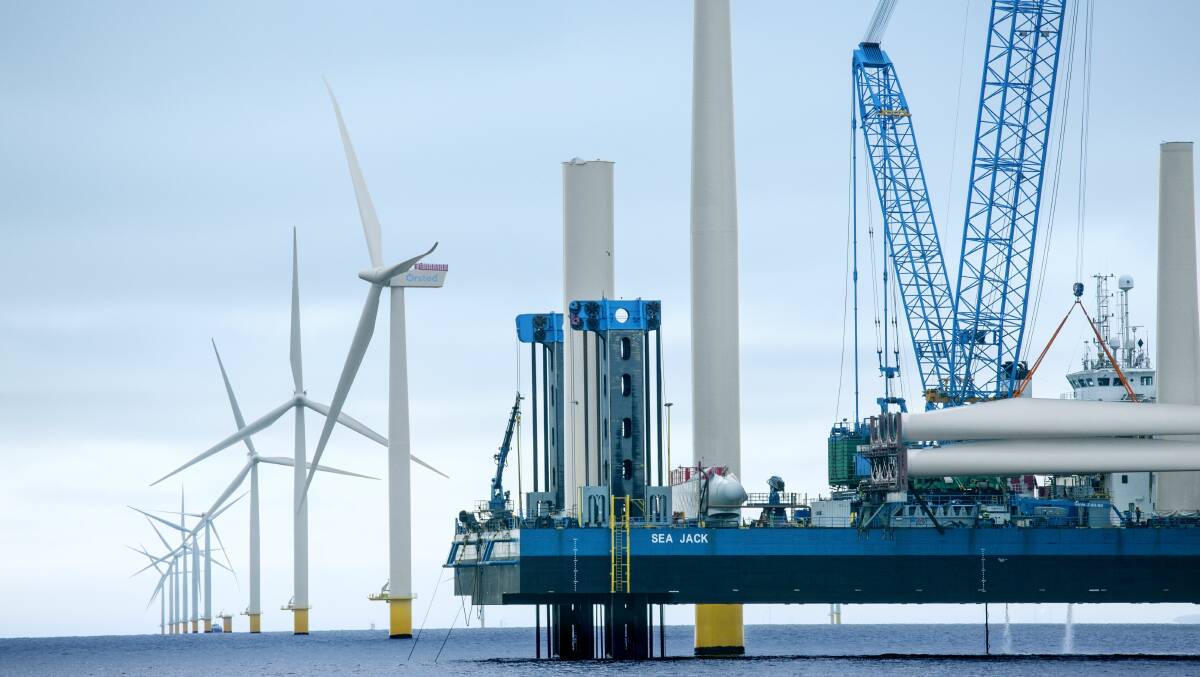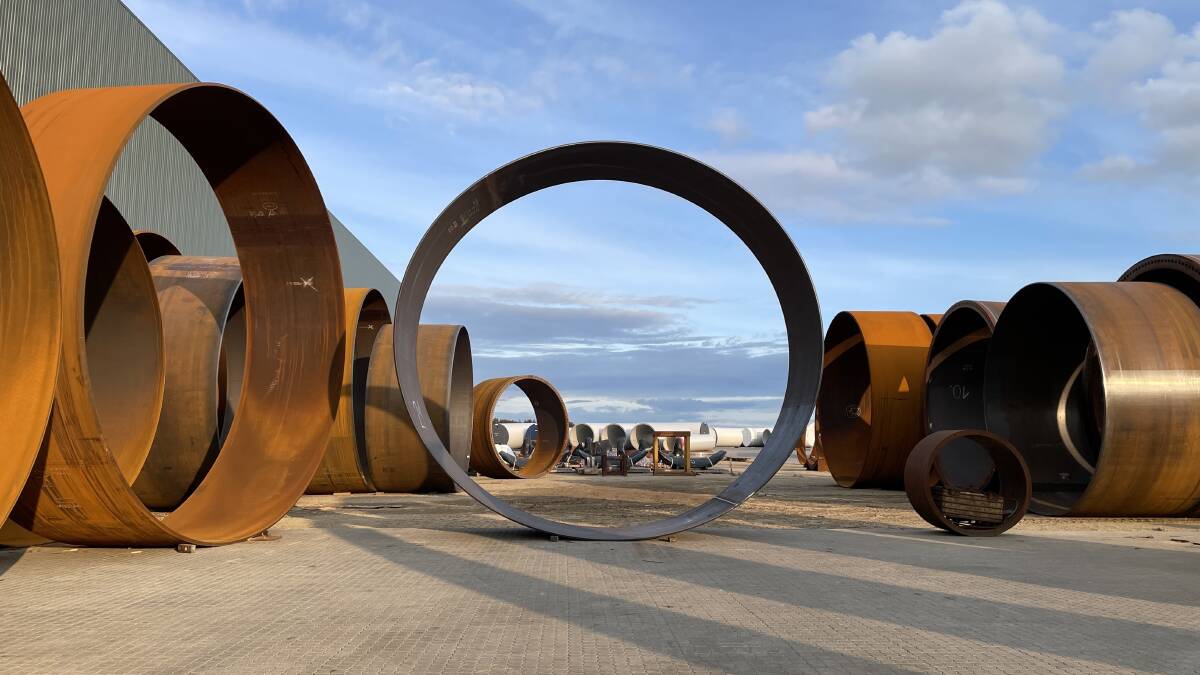Business reporter Connor Pearce travelled to Denmark to find out what a future with wind farms looks like for the Illawarra. His second piece in his series of stories connects the dots between a wind farm off the Danish east coast, a steel plant in the heart of Jutland and the Illawarra.
Subscribe now for unlimited access.
$0/
(min cost $0)
or signup to continue reading
Standing at the dock in the Danish port town of Grenaa, the Anholt offshore wind farm, roughly 20 kilometres away, is barely distinguishable on the horizon, but in town, the impact of the wind farm is clear.
Ten years after the blades first began spinning, a local workforce of 70 and three service ships keep the 111 turbines running on a daily basis.
"You build the damn things, you maintain them, you commission them, you build some new things," the chairman of the maritime division of Dansk Metal said.
"It's a 20-year cycle, you don't just build it and forget it."
And it is these kinds of well-paid, skilled jobs that Cunningham MP Alison Byrnes hopes to bring to the Illawarra if a proposed offshore wind farm materialises on our horizon.
"The main thing we have to do at the moment is predicting jobs and skills, and how we start getting more engineers, electricians, metal workers. These are the sorts of things we're really going to need," she said.

How many jobs?
The Australian government estimates that an offshore wind industry in Australia, once established, would support 3000 to 8000 jobs per year, and the Victorian government is targeting 59,000 jobs from offshore wind in its state.
In Denmark, which has nurtured its wind industry for the past 50 years, more than 30,000 people are directly employed in the wind industry and the jobs are not just at the portside.
A two-hour drive from Grenaa, sandwiched between a motorway and farmland is a 120,000 square metre factory that produces 30 tower sections a week for the offshore wind industry.
This is the base of Welcon, a manufacturer that employs 740 people to turn 200,000 tonnes of steel a year into 50 per cent of all offshore wind towers in Europe.
Inside the factory, giant plates of flat steel are bent into cylinders by an array of robots, welded together, before being painted and sealed.
Locals in the nearby towns of Give and Brand know to get their shopping done before 8pm, as each night trucks transport the segments up to 10 metres in diameter down the highway to ports such as Esbjerg.

Translating the Danish experience
The complexity of transporting such large components mean that being close to where the wind farms will be launched from is key, particularly as the foundations become more complex for floating wind farms, as proposed in the Hunter and the Illawarra. As Taiwan has recently progressed its wind farm industry, Welcon has entered into a knowledge sharing agreement with a local manufacturer, as Rune Holm, head of technology transfer at Welcon explained.
"We were approached by a company and they asked us if we could support them in building a facility," he said.
Mr Holm said a similar arrangement could be made with an Australian steel manufacturer.
"I don't believe we will ever deliver a [floating wind turbine] foundation to Australia, it is too far away," he said.
"We'll go into that with other companies who are willing to do the investment needed."
Currently, ports such as Port Kembla and the Port of Newcastle handle large amounts of wind turbine components built overseas and shipped to Australia for onshore wind projects.
BlueScope has targeted wind turbine manufacturing as part of its investment into an upgraded plate and tube mill. Other manufacturers based interstate have considered Port Kembla as a potential location for wind tower manufacturing, but have been blocked by overpasses on key arterial roads which limit the height of parts, which are only getting larger.
Maximising local value
However, beyond logistical hurdles, what the Danish experience has shown is the value in setting clear targets, which allows the industry to have confidence to invest in local production. Martin Evans, UK managing director of wind consulting firm Jumbo Group, said when wind developers were looking to invest in local production, a pipeline of projects was essential.
"Certainty is something that governments can certainly give. A clear policy, and a timeline as well," he said.
This was a sentiment echoed by wind turbine manufacturer Vestas.
"Focus on volume first," a Vestas spokesperson said. "And not just on the targets and ambition level, but actually break those down into a year on year visible pipeline, with a consecutive auction schedule to provide real visibility to the industry."
For any project, not all components will be able to be manufactured locally, Mr Evans said, and that instead, to maximise value to the local community, policy makers could seek out "tangible, realistic local content opportunities".
In some ways, however, the tyranny of distance which has often limited Australia's ambitions may be an advantage in offshore wind, as Mr Philipsen pointed out.
"Where Australia is placed, no company is going to send offshore construction vessels for one job, they're going to put a vessel permanently down there," he said.
"It's going to be Australian seafarers, as long as you can develop the skills needed."
Ms Byrnes said the Illawarra had the ingredients in place to maximise local value through the construction and maintenance of offshore wind turbines.
"Bringing together industry, community, government and unions is really important, and that's the way we will be able to maximise our opportunities going forward."
The Mercury travelled with the assistance of the Danish Embassy, Canberra.
Our news app has had a makeover, making it faster and giving you access to even more great content. Download The Illawarra Mercury news app in the Apple Store and Google Play.


